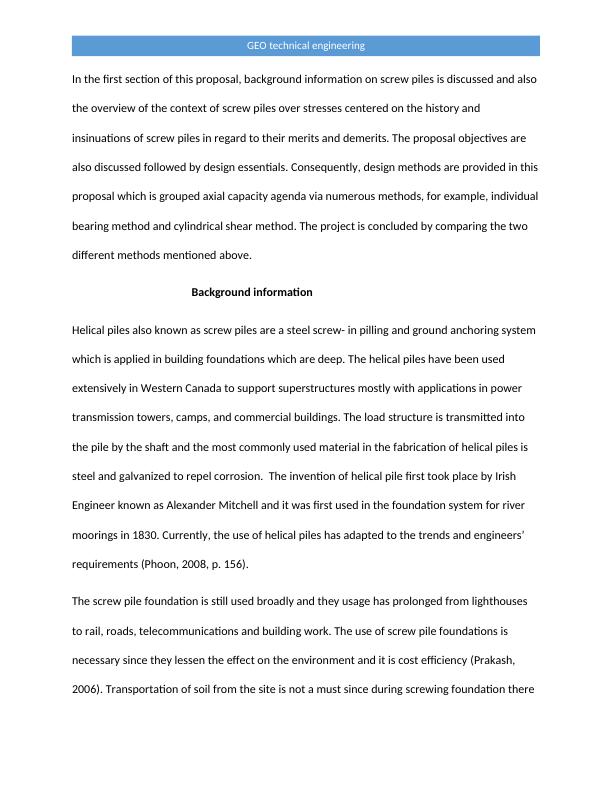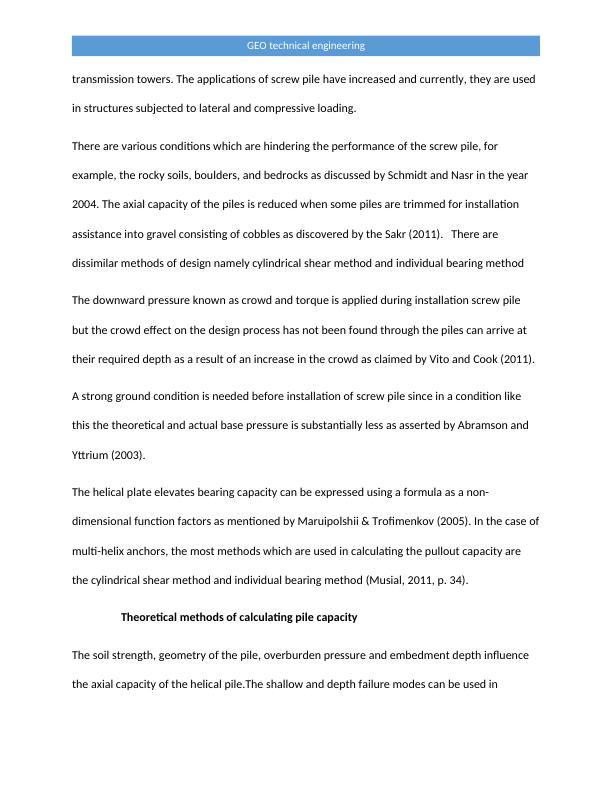Screw Piles: Design and Capacity Calculation Methods
14 Pages2830 Words357 Views
Added on 2023-06-11
About This Document
This proposal discusses the background and advantages of screw piles, followed by objectives, design essentials, and methods for calculating axial capacity. The proposal also covers experimental testing and results. The subject is GEO technical engineering, and the course code and college/university are not mentioned.
Screw Piles: Design and Capacity Calculation Methods
Added on 2023-06-11
ShareRelated Documents
End of preview
Want to access all the pages? Upload your documents or become a member.
Research Paper on Analysis of Screw Piles
|8
|1307
|231
Screw Piles: Analysis, Design, Advantages, Disadvantages, and Installation
|8
|639
|231
Research Paper on Screw Piles
|53
|16641
|80
Concept of Screw Piles - PDF
|8
|1405
|127
Foundation Design for Five Storey Steel Framed Student Accommodation Building
|9
|2066
|165
BN2001 construction technology PDF
|9
|2042
|214




